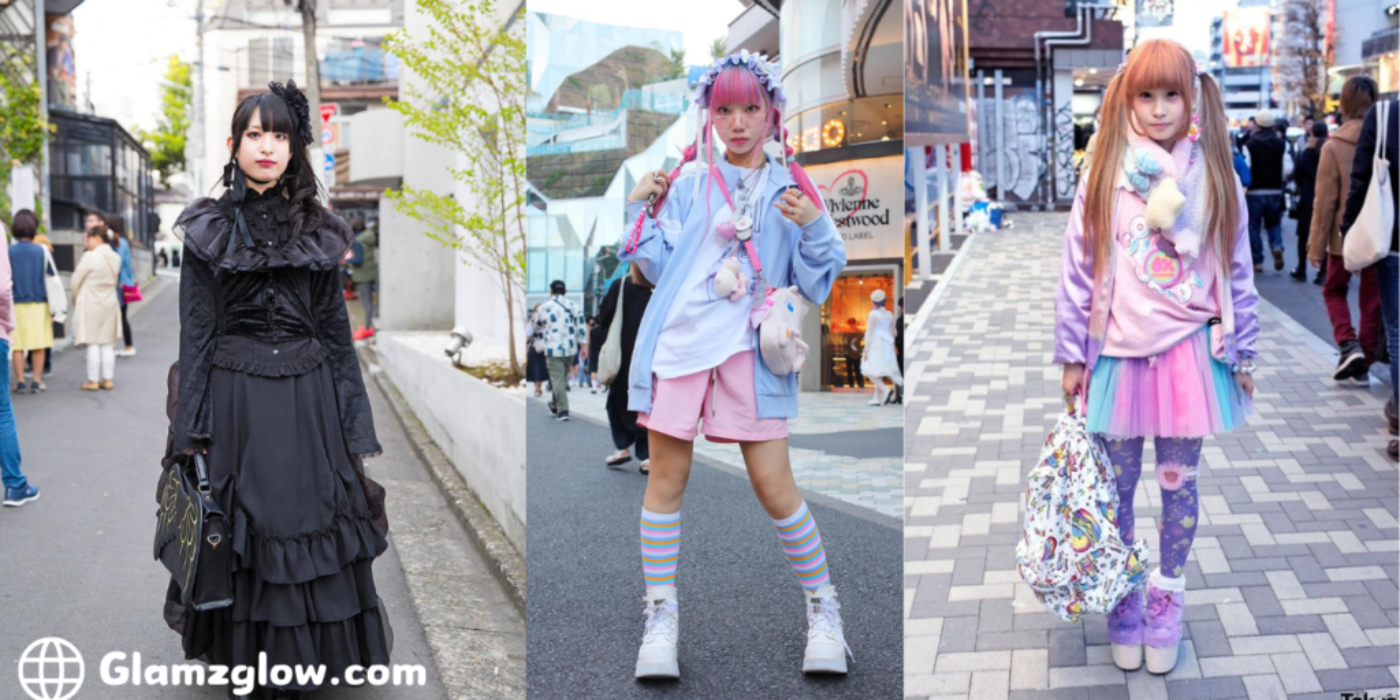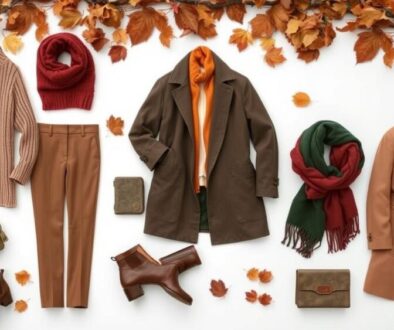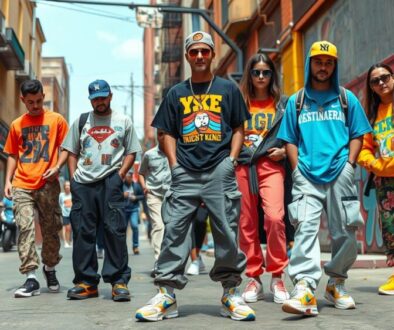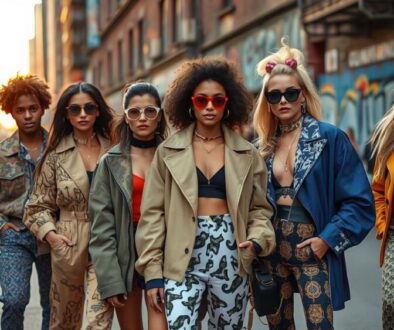Exploring Harajuku Fashion: A Dive into Japan’s Most Colourful Trend
Harajuku fashion refers to a daring and colourful style that originated in the Harajuku area of Tokyo, Japan. This astonishing creative direction has intrigued and enamoured the world through style liberation and incorporation of daring designs. Harajuku fashion: its background, basic constituents, effects on culture, and other significant contributions will be discussed in this article.
Origins of Harajuku Fashion
People’s Harajuku fashion developed depending on creativity. In the 1980s and early 1990s, young people in this area came up with a new style of dressing. It was until then a town between Shinjuku and Shibuya that became a network of roads where the youth could show their radical nature and defiance by what they wore or put on as ornaments. Takeshita Dori was changed into the ‘freedom and rebellious’ fashion trend runway.
Given that the Harajuku fashion is related to the Japanese fashion in the streets, some of the other trends identified include the Kogal fashion, Decora, Gothic Lolita, and Visual Kei trends. All of these subcultures added to the excellence given that Harajuku was a melting pot of styles for fashion.
Kogal: School attire is unfashionable and altered; short skirts, loose socks and dyed hair are among features associated with this style. It reflects a rebellious attitude or a passion to resist the norms of society and have their own way.
Decora: Also known as the “-decoration” approach, being creative here implies accessorizing, having multiple bright and fun outfits and wearing toys and stickers everywhere. They came so far from quite the opposite – maximalism and an excessive amount of visual information.
Gothic Lolita: A style that ranges itself between Victorian and Rococo with a Gothic touch, clothing that is dark, elegant and ornamented. The look most commonly features lace, frills, and other more specific elements.
Visual Kei: Originally evolved from Japanese musicians, especially the rock and metal groups, Visual Kei encompasses elaborate and dramatic visuals characterized by heavy makeup, outlandish hairstyles, and over the top costumes.
Key Elements of Harajuku Fashion
Bold Colours and Patterns: Designers characterise Gothic and Lolita Harajuku fashion trends by using conspicuous colours and patterns. They often use neon hues, combined clashing checks, and textures to depict an aesthetic that goes against the grain of traditional fashion conventions.
Layering and Accessories:This is true because layering is an essential concept applicable to all the Harajuku styles. Outfits are layered frequently, and pieces may be combined in a way not typical within different layers. Accessories also bear some importance in addition to the clothing and things like belts, big bows, caps, wigs, and even jewellery serve to complement its appearance.
DIY and Customization: Yet, individualism plays an important role in defining the Harajuku style. To be specific, the majority of enthusiasts draw or sew their own clothes or alter the ready-made pieces to their tastes. It also allows for the expression of creativity and the creation of unique pieces that can be made in large quantities while avoiding duplication.
Cultural Mashup: Harajuku fashion often incorporates elements from various cultures and time periods. Fashion enthusiasts might pair traditional Japanese garments like kimonos with punk rock accessories or vintage Western clothing, resulting in a fascinating blend of old and new, East and West.
Individual Expression:At the centre of Harajuku fashion lies the appreciation of uniqueness. It is more than just keeping up with the latest trends but about creating an individual style that communicates one’s identity, passions and feelings. This method enables a wide variety of appearances which in turn keeps it from being uniform or easily predicted.
Cultural Impact and Global Influence
Harajuku fashion has had a profound impact on global fashion trends. It has inspired designers, artists, and fashion enthusiasts worldwide. The style gained international attention through media exposure, particularly in the 2000s, with figures like Gwen Stefani popularizing the aesthetic through her music and fashion line.
The annual Harajuku Fashion Walk and the Harajuku Street Style blogosphere have played significant roles in promoting and preserving this unique fashion culture. Instagram and Pinterest have also amplified its reach, allowing a global audience to engage with and be inspired by Harajuku fashion.
Even today in Japan, the clothes and other fashion accessories of the Harajuku are considered rebels and are still artistic outlets. It remains relevant to this very day, adopting the trends and concepts of the modern world while remaining loyal to its function of fostering uniqueness and shattering conformity.
The Evolution of Harajuku Fashion
However, to conclude, Harajuku fashion predates the eighties and nineties but is a dynamic fashion trend. With each decade comes new additions and factors that change bringing into the society and technology change.
2000s: In the early part of the decade, Harajuku fashion gained more mainstream visibility, instigated by celebrities like Gwen Stefani, who integrated the style into her persona and music. This period also saw the emergence of the so-called ‘cute Kawaii movement,’ which affected the frippery of Harajuku zones in one way or another.
2010s: In this decade, hashtags such as #Harajuku and #Tumblr transferred Harajuku style to the worldwide web. The style became more common and open to the world, forming more enthusiasts in various parts of the world. Influencers and bloggers captured and shared Harajuku fashion, each giving their personal spin to the trends and helping to further the ongoing evolution.
2020s and Beyond: Even today, the new styles of this year’s Harajuku fashion remain unchangeable and provoking. These concepts like sustainability and ethical fashion are popular hashtags, and many followers of Harajuku fashion urge to save the environment and buy second-hand clothes. The pandemic also played a role in fashion changes, masks and hygiene items became fashionable accessories.
Harajuku Fashion Icons and Influencers
Some people have emerged as great legends in the fashion arena and style trendsetters, placing their style of dressing in the category of Harajuku.
Kyary Pamyu Pamyu: A pop star and a fashion diva of the early 1980’s best remembered for her wild and outrageous image. She always wears and promotes her dresses in her music videos and appearances, thus becoming the fashion’s culture promoter worldwide.
FRUiTS Magazine: This Harajuku’s street fashion magazine was published by Shoichi Aoki, showcasing the colourful fashions and cultures between 1997 and 2017. It was a great way of presenting creative and diverse Harajuku fashion to the world by presenting new styles from different people.
Harajuku Fashion Walk: A celebration wherein people come to showcase their apparels with Harajuku and showcasing the community and aesthetic of the fashion. Art is a way people can express themselves and share ideas and common interests with other individuals.
The Legacy of Harajuku Fashion
To sum up, Harajuku fashion itself has made a great impact on the fashion area. It impacts the apparel, art, music, and other aspects of pop culture. It stands for freedom of expression and creativity, which in a way opposes conformity and mainstream culture.
The legacy of Harajuku fashion lies in its ability to continually reinvent itself while maintaining its core principles. It’s a testament to the power of creativity and the importance of subcultures in shaping broader cultural movements.
Conclusion
The popularity of Harajuku fashion goes beyond just being an outfit; this is a cultural movement that revels in differentiation, ingenuity, and self-expression. It traces its roots back to the energetic streets of Tokyo, but today it has spread worldwide while keeping its originality.Whether you love dressing up or you are just into clothes, Harajuku fashion will provide you with an opportunity to experiment with your style like never before. It changes every year without fail but one thing about harajuku remains constant – there’s no limit as long as one wants to look outstanding!



